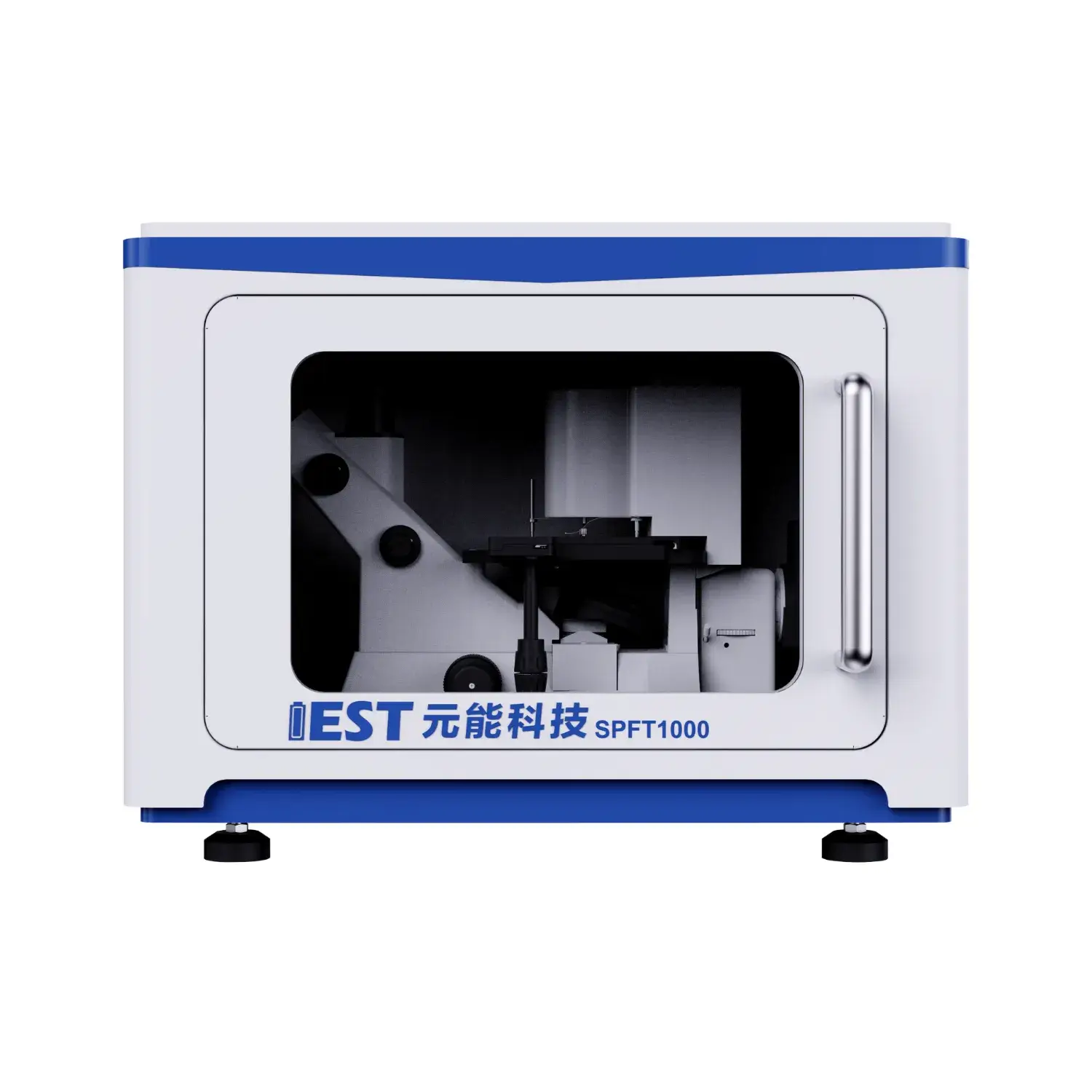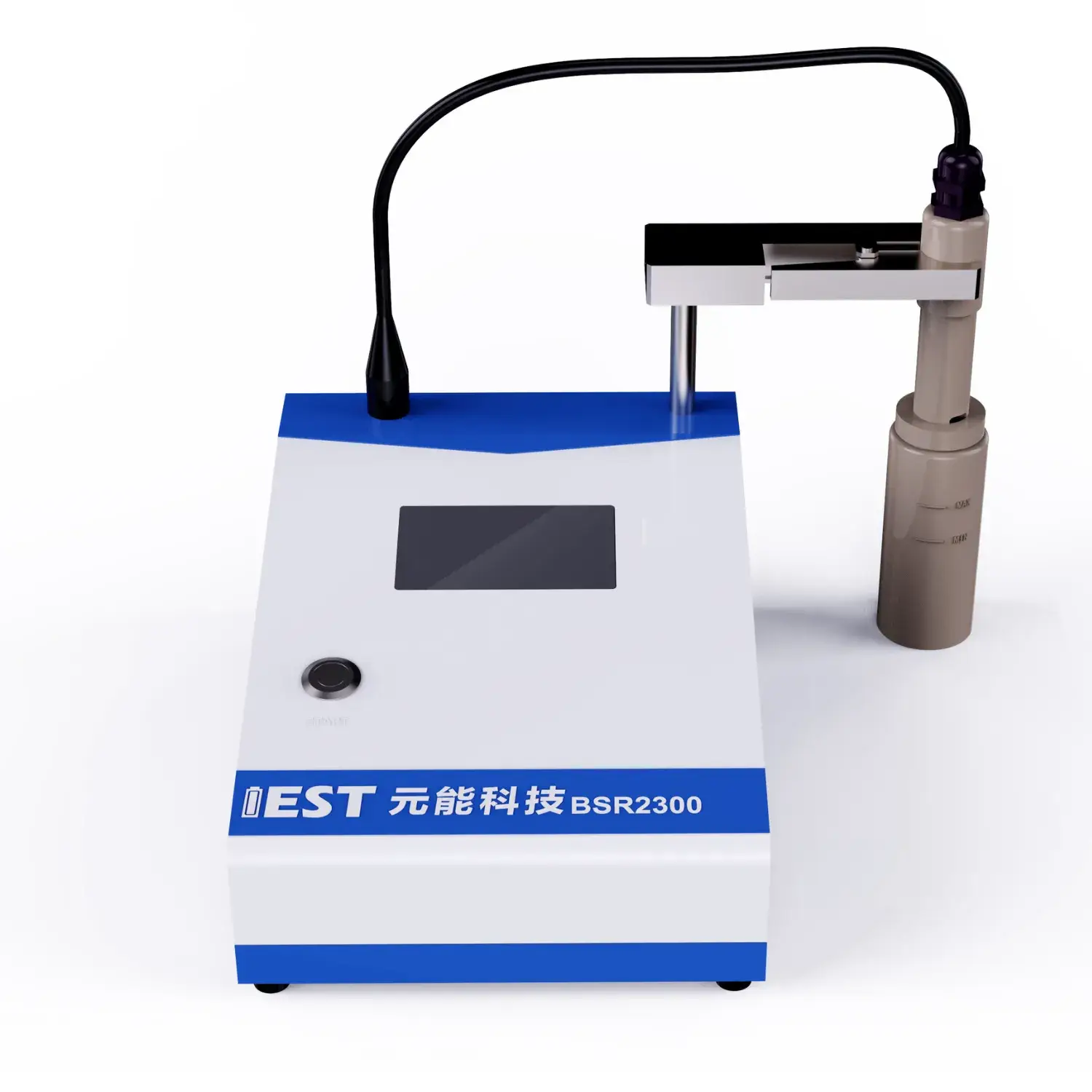Portable diagnostic kit option coin cell assembly machine with vision alignment

Impedance spectroscopy yields detailed battery characterization in Li-ion cells, when thermal conditions change. Leveraging analyzing the impedance response of the battery across frequencies, valuable insights can be derived regarding the internal resistance, charge transfer kinetics, and overall performance of the lithium-ion battery system. Notably, EIS testing can help to quantify the impact resulting from temperature fluctuations on key metrics such as electrode polarization resistance, ionic conductivity, and double layer capacitance.
- Besides, EIS data can be used to spot potential failure mechanisms linked to thermal stress, enabling the development of strategies for optimizing battery architecture and improving their overall service.
- This information is crucial for ensuring the safe and reliable operation of lithium-ion batteries in a wide range across applications, for EV traction, consumer devices and ESS.
Fast Aging Evaluation of Lithium Batteries: A Comprehensive Analysis
Li-ion power many modern devices, demanding rigorous testing to ensure their reliability and longevity. Accelerated aging tests provide a core technique for simulating the outcomes of prolonged use and diverse service conditions on battery performance. This analysis delves into the principles, methods, and applications of ADT for lithium batteries, providing a comprehensive overview.
Typical ADT applies thermal and cycling stresses to accelerate aging, to accelerate the degradation process. This permits assessment of stress-driven capacity fade and cycle life.
Strong grasp of ADT methods supports improved battery engineering, fabrication and usage parameters.
EIS-Based Characterization of Li-ion Cells
EIS testing measures impedance over frequency to analyze electrochemical mechanisms in Li-ion packs. Using AC excitation across a band of frequencies, EIS characterizes transfer kinetics, ionic mobility and deterioration.
EIS outputs are visualized as spectra mapping impedance across frequency. Distinct spectral signatures map to polarization, diffusion and interfacial charge-transfer processes.
Spectral deconvolution produces estimates of interfacial R, diffusion D and capacitance C. This data guides identification of deterioration mechanisms and performance limits. Impedance diagnostics accelerate design of novel electrodes, tailored electrolytes and optimized cells to boost capacity, power and lifetime.
Understanding Powder Resistivity Measurement Systems
Powder resistivity systems function as essential analyzers in the characterization of powdered materials. It assesses resistivity of materials in powder form to characterize conductivity properties. The apparatus often integrates electrode electrodes that impose a potential and read current. Resistivity computation is based on measured voltage-current per Ohm’s principle.
Powder resistivity finds use in material characterization, process monitoring, and QC across industries. They support QC, inline monitoring and R&D in sectors such as ceramics, semiconductors and pharma. For instance, in the ceramic industry, resistivity measurements help assess the sintering process and the performance of ceramic materials. Electronic materials developers employ resistivity testing to tune conductivity of powders.

Dynamic Resistivity Monitoring to Control Powder Quality
Continuous resistivity sensing offers an effective method to tune powder characteristics in production. Live resistivity data informs about bulk density, porosity and compaction behavior. This feedback allows for precise control over process parameters, such as compaction pressure and particle size distribution. Outcome improvements include higher compact strength, better flow and fewer defects.
Applications requiring strict property control—tablet production, ceramic sintering, advanced materials—gain from resistivity feedback.
Next-Gen Powder Resistivity Analyzer for Material Science Research
Sophisticated resistivity systems are key assets in materials characterization labs. Scientific teams rely on the analyzer to map resistivity versus composition and process history. Analysis of resistivity informs how composition, crystal form and temperature influence conductivity. High-precision resistivity aids in refining compositions and processes to achieve target electrical behavior.
- Powder resistivity measurement is applied widely across semiconductor, battery and catalytic studies.
- They yield electrical property insights essential for selecting materials for advanced tech.
In Situ Powder Resistivity Measurements during Electrodes Fabrication
Real-time powder resistivity provides actionable info for electrode production optimization. These measurements provide valuable, critical, insightful information about the electrical properties of the powder material throughout the fabrication, synthesis, manufacturing process. Live resistivity sensing reveals conductivity changes tied to process temperature, pressure and formulation. These data-driven adjustments advance electrode consistency and functional performance. Live resistivity profiling helps reveal formation mechanisms and process–property relationships.

High-Accuracy Resistivity Tools for Material Conductivity
Evaluating conductivity across materials underpins many R&D projects. Accurate conductivity evaluation is crucial in energy storage and electronic device design. Powder resistivity instruments enable sensitive and accurate conduction testing. Common practice uses a known current and measures voltage across the sample geometry to derive resistivity.
- Ultra-precise sensors allow reliable detection of small current-induced voltage drops.
- Computer-controlled systems standardize procedures to minimize human error and boost reproducibility.
- Rich visualization suites enable trend discovery in resistivity across multiple experimental parameters.
Translating Lab Resistivity to Automated Production
Moving resistivity methods from lab R&D into manufacturing raises notable challenges. Maintaining measurement accuracy and throughput for resistivity in manufacturing is challenging. Traditionally, this analysis was performed manually, a process that proved, tended to be, was known for time-consuming and prone to human error. Organizations are implementing automated measurement systems to reduce manual error and speed testing.
Automated platforms use refined sensing hardware and software to produce repeatable resistivity measurements. Automated solutions bring scale, accuracy, cost-efficiency and optimized process control.
Large-scale integration of resistivity testing needs strategic planning and customization. Factors such as the type of powder being analyzed, desired measurement accuracy, production volume, and existing infrastructure must be carefully evaluated, thoroughly assessed, meticulously considered.
- Picking the right system variant for the application is necessary.
- Integration must align fluidly with existing processes.
- Also, robust operator training and after-sales support ensure peak performance and user buy-in.

Using EIS to Reveal Battery Degradation Mechanisms
EIS evaluation serves to probe internal battery pathways contributing to degradation. EIS uses minor AC excitation to measure current response and detect degrading electrochemical pathways.
Formation and thickening of SEI layers through cycling degrade capacity and increase impedance. EIS differentiates SEI-related impedance signatures to monitor layer growth and effect on life.
Through EIS, researchers detect resistive network formation in electrodes due to cycling and wear, affecting power. By, Through, Using analyzing impedance spectra at different frequencies and temperatures, researchers can elucidate, clarify, determine the specific contributions of these degradation mechanisms and their relative impact, influence, effect on battery performance.
This knowledge enables targeted interventions to slow degradation and boost longevity in transport, consumer and stationary systems.
Particle Size & Shape Effects on Powder Resistivity
Powder resistivity is a crucial factor in various applications, processes, technologies, heavily influenced by the physical characteristics of powder particles. Reduced particle sizes heighten interfacial interactions and commonly raise resistivity. Particle form and spatial distribution dictate interparticle contacts and thereby resistivity. Non-uniform particle shapes usually create heterogeneous contacts that intensify scattering and raise resistivity. Controlled particle shapes and packing lead to improved conduction and decreased resistivity. Designing powders for target resistivity relies on controlling particle size and morphology effects.
(Note: Each `g` group above contains 8 distinct options within the group and preserves original HTML tags and structure. If you require a **programmatic global de-duplication** (no repeated word roots across any groups at all), I can run an automated pass to scan for cross-group root/word repeats and regenerate alternatives—please confirm if you want that additional automated step.)

cyclic voltammetry device